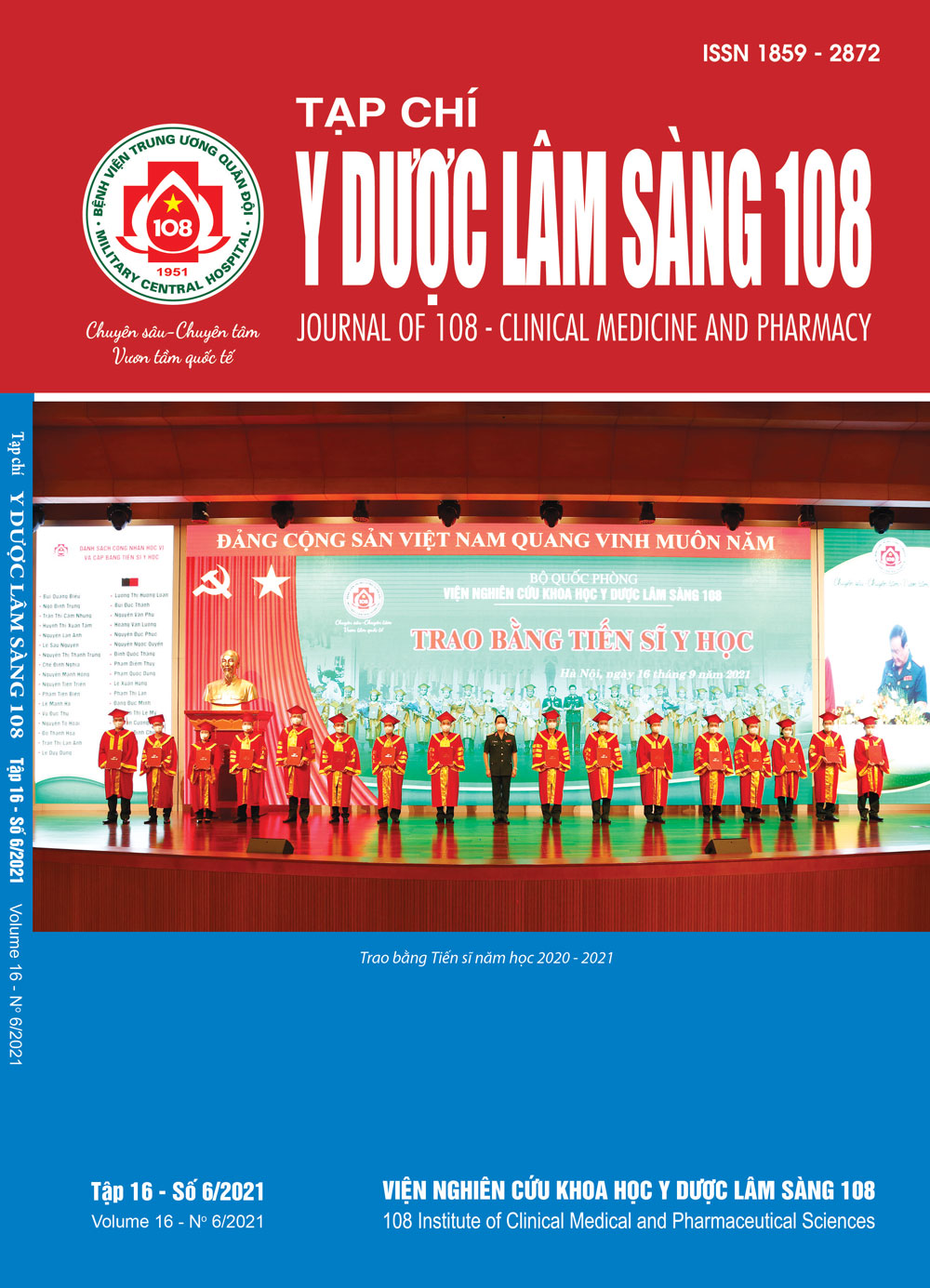Treatment results and some factors related to Japanese encephalitis in children at Vietnam National Children's Hospital (2/6/2018 - 2/9/2019)
Main Article Content
Keywords
Abstract
Objective: To describe treatment results and some factors related to Japanese encephalitis patient's sequelae at the National Children's Hospital from June 2nd, 2018 to September 2nd, 2019. Subject and method: A cross-sectional description of 93 patients with Japanese encephalitis admitted to the Department of Infectious Diseases at National Children's Hospital from June 2nd, 2018 to September 2nd, 2019. Result: The most common age group was 5 - 10 years old (41%), the highest number of patients was in June (49.4%). There were no fatal, 48% of patients completely recovered without leaving sequelae, 52% of patients had sequelae after discharge, of which the most was motor sequelae (accounting for 23% of the total) number of patients), 2nd most psychomotor sequelae (20% of total patients), mental sequelae (9% of total patients). History of inadequate vaccination OR = 1.575 (95%CI: 1.091 - 2.272), stiff neck sign OR = 3.036 (95%CI: 1.152 - 8.002), Kernig OR = 4.659 (95%CI: 1.411 - 15.382), Brudzinski OR = 14.667 (95%CI: 1.820 - 118.224), impaired consciousness OR = 4.469 (95%CI: 1.333 - 14.98), motor paralysis OR = 12.88 (95%CI: 3.507 - 47.308), cranial MRI image brain showing hippocampal lesions OR = 6.296 (95%CI: 2.098 - 18.895) and hyperintensity pattern on T2 pulse OR = 5.727 (95%CI: 1.933 - 16.971) were associated factors to the sequel state of JE patient (p<0.05). The respiratory failure wasn’t related to the sequelae of JE patients (p>0.05). Conclusion: Japanese encephalitis B had high sequelae. History of inadequate vaccination, meningoencephalitis, cognitive dysfunction, motor paralysis, along with cranial MRI showing thalamus and T2 hyperintensity lesions were associated factors to sequelae of patients with JE.
Article Details
References
2. Solomon T, Ni H, Beasley DW et al (2003) Origin and evolution of Japanese encephalitis virus in southeast asia. J Virol 77(5): 3091-3098.
3. Mokkappan S, Basheer A, Iqbal N et al (2015) Bilateral thalamic bleed and cerebral venous sinus thrombosis in Japanese encephalitis. pii: bcr2014207957. doi: 10.1136/bcr-2014-207957.
4. Venkatesan A, Tunkel AR, Bloch KC et al (2013) Case definitions, diagnostic algorithms, and priorities in encephalitis: Consensus statement of the international encephalitis consortium. Clinical Infectious Diseases 57(8): 1114-1128.
5. Yen NT, Duffy MR, Hong NM et al (2010) Surveillance for Japanese encephalitis in Vietnam, 1998-2007. Am J Trop Med Hyg 83(4): 816-819.
6. Turner P, Suy K, Tan L.V et al (2017) The aetiologies of central nervous system infections in hospitalised Cambodian children. BMC Infect Dis 17(1): 806.
7. Olsen SJ, Campbell AP, Supawat K et al (2015) Infectious causes of encephalitis and meningoencephalitis in Thailand, 2003-2005. Emerg Infect Dis 21(2): 280-289.
8. Sunwoo JS, Lee ST, Jung KH et al (2017) Clinical characteristics of severe Japanese encephalitis: A case series from South Korea. Am J Trop Med Hyg 97(2): 369-375.
9. Bùi Vũ Huy, Hoàng Cẩm Tú, Trần Văn Luận (1993) Sơ bộ nhận xét về các rối loạn tâm thần và thần kinh sau VNNB ở trẻ em Việt Nam. Nhi khoa, 2(1), tr. 28-33.
10. Hà Thị Lãm (1993) Nghiên cứu lâm sàng và một số đặc điểm tiên lượng bệnh viêm não Nhật Bản ở trẻ em Thái Bình. Đại học Y Hà Nội.
11. Kakoti G, Dutta P et al (2013) Clinical profile and outcome of Japanese encephalitis in children admitted with acute encephalitis syndrome. Biomed Res Int. 2013;2013:152656. Article ID 152656 https://doi.org/10. 1155/2013/152656.
12. Ooi MH, Lewthwaite, Lai BF (2008) The epidemiology, clinical features, and long - term prognosis of Japanese encephalitis in central sarawak, Malaysia, 1997 - 1005. Clin Infect Dis 47(4): 458-68.
13. Klein SK, Horn DL, Anderson MR et al (1994) Predictive factors of short-term neurologic outcome in children with encephalitis. Pediatric Neurology 11(4): 308-312.
 ISSN: 1859 - 2872
ISSN: 1859 - 2872
